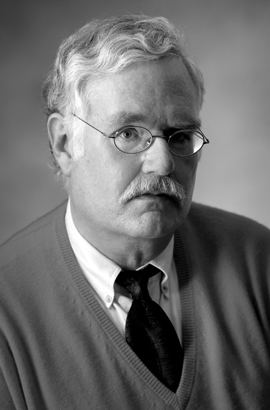Nationality American Role Physicist Name Frank Tipler | ||
 | ||
Books The Physics of Immortality, The Physics of Christianity Parents Anne Tipler, Frank Jennings Tipler Jr. Education University of Maryland, College Park (1969–1976), Massachusetts Institute of Technology (1965–1969) Similar People John D Barrow, Hubert Reeves, Paul Tulane | ||
Frank j tipler
Frank Jennings Tipler (born February 1, 1947) is a mathematical physicist and cosmologist, holding a joint appointment in the Departments of Mathematics and Physics at Tulane University. Tipler has written books and papers on the Omega Point based on Pierre Teilhard de Chardin's religious ideas, which he claims is a mechanism for the resurrection of the dead. He is also known for his theories on the Tipler cylinder time machine. People have argued that his theories are largely pseudoscience.
Contents
- Frank j tipler
- Can Physics Prove God and Christianity Frank Tipler vs Lawrence Krauss
- Biography
- The Omega Point cosmology
- Reception
- Books
- Articles
- References

Can Physics Prove God and Christianity? Frank Tipler vs Lawrence Krauss
Biography

Tipler was born in Andalusia, Alabama, to Frank Jennings Tipler Jr., a lawyer, and Anne Tipler, a homemaker. From 1965 through 1969, Tipler attended the Massachusetts Institute of Technology, where he completed a bachelor of science degree in physics. In 1976 he completed his PhD with the University of Maryland. Tipler was next hired in a series of postdoctoral researcher positions in physics at three universities, with the final one being at the University of Texas, working under John Archibald Wheeler, Abraham Taub, Rainer K. Sachs, and Dennis W. Sciama. Tipler became an Associate Professor in mathematical physics in 1981, and a full Professor in 1987 at Tulane University, where he has been a faculty member ever since.
The Omega Point cosmology

The Omega Point is a term Tipler uses to describe a cosmological state in the distant proper-time future of the universe that he maintains is required by the known physical laws. According to this cosmology, it is required for the known laws of physics to be mutually consistent that intelligent life take over all matter in the universe and eventually force its collapse. During that collapse, the computational capacity of the universe diverges to infinity and environments emulated with that computational capacity last for an infinite duration as the universe attains a solitary-point cosmological singularity. This singularity is Tipler's Omega Point. With computational resources diverging to infinity, Tipler states that a society far in the future would be able to resurrect the dead by emulating all alternative universes of our universe from its start at the Big Bang. Tipler identifies the Omega Point with God, since, in his view, the Omega Point has all the properties of God, claimed by most of the traditional religions.
Tipler's argument that the omega point cosmology is required by the known physical laws is a more recent development that arose after the publication of his 1994 book The Physics of Immortality. In that book (and in papers he had published up to that time), Tipler had offered the Omega Point cosmology as a hypothesis, while still claiming to confine the analysis to the known laws of physics.
Tipler defined the "final anthropic principle" (FAP) along with co-author physicist John D. Barrow in their 1986 book The Anthropic Cosmological Principle as a generalization of the anthropic principle thus:
Intelligent information-processing must come into existence in the Universe, and, once it comes into existence, will never die out.
Reception
Tipler's Omega Point ideas have received vigorous criticism by physicists and skeptics. Some critics say its arguments violate the Copernican principle, that it incorrectly applies the laws of probability, and that it is really a theology or metaphysics principle made to sound plausible to laypeople by using the esoteric language of physics. Martin Gardner dubbed the Final Anthropic Principle, (FAP), the "completely ridiculous anthropic principle" (CRAP). Oxford-based philosopher Nick Bostrom writes that the final anthropic principle is "pure speculation" with no claim on any special methodological status, despite attempts to elevate it by calling it a "principle", but considers the Omega Point hypothesis to be an interesting scientific possibility in its own right. Philosopher Rem B. Edwards called it "futuristic, pseudoscientific eschatology" that is "highly conjectural, unverified, and improbable".
Physicist David Deutsch defends the physics of the Omega Point cosmology, and incorporates it as a central feature of the fourth strand of his "four strands" concept of fundamental reality; although he is highly critical of Tipler's theological conclusions and what Deutsch states are exaggerated claims that have caused other scientists and philosophers to reject his theory out of hand. Researcher Anders Sandberg pointed out that he believes the Omega Point Theory has many flaws, including missing proofs.
George Ellis, writing in the journal Nature, described Tipler's book on the Omega Point as "a masterpiece of pseudoscience… the product of a fertile and creative imagination unhampered by the normal constraints of scientific and philosophical discipline", and Michael Shermer devoted a chapter of Why People Believe Weird Things to enumerating what he thought to be flaws in Tipler's thesis. Physicist Sean M. Carroll thought Tipler's early work was constructive but that now he has become a "crackpot". In a review of Tipler's The Physics of Christianity, Lawrence Krauss described the book as the most "extreme example of uncritical and unsubstantiated arguments put into print by an intelligent professional scientist".
